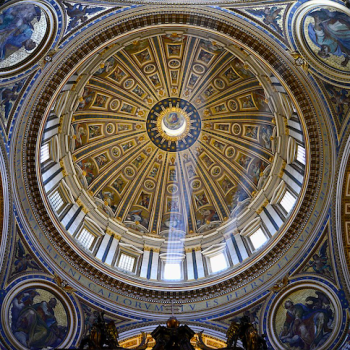Any metaphor that I use in this book is only meant for a deeper understanding of faith as presented in Genesis 1–11 and is not intended to be a permanent interpretation of the text. I believe that if we do not use metaphors to interpret the text, we will be missing out on the full and complex meanings contained in the greatest book ever written. What is a fine interpretation at one point in our lives can become stale as we grow. But if we continue to read, the metaphors change, and as they change, so do we. I believe that uncovering the metaphors found in Genesis 1–11 takes us on a journey of faith. This is exactly what happened to me with my reading of the Bible. For years I was not encouraged to see new metaphors in the stories of Genesis 1–11, so I put the Bible aside and was at risk for never seeing the deeper beauty of the primeval history.
It is no wonder that people resist any interpretation of the Bible other than the literal interpretation. We have not been taught to use metaphors as tools to explore deeper meanings of this text. I can even remember being warned not to try to interpret the Bible myself because it was too dangerous. However, having failed to find faith reading the Bible in the way others told me to, I just had to try and see what the stories meant to me as metaphors. It may have been a dangerous venture, but I could not accept the alternative—a life without real faith. When I read the primeval history as a metaphor for what faith was and how it related to me, the stories exploded with insights and connectivity. They were now really engaging me, but this time in the language I could understand.
The individual stories not only started to really speak to me, but I also began to see why Genesis 1–11 included the exact stories in the exact order that it did. Before I saw the metaphors, the stories of creation, Adam and Eve, Cain and Abel, Noah's ark, and the Tower of Babel seemed like unrelated, random tales. When the metaphors revealed themselves, each story became a part of a bigger picture. Like a jigsaw puzzle, each story's images were individual pieces, and when put together, they made one complete picture—a picture of faith. This linking together of stories is called concatenation. Seeing the new metaphors and discovering how the stories connected to each other became very exhilarating to me, and I wanted to read and explore more of the Bible every chance I got. I'll admit that sometimes I would intentionally avoid the Bible altogether, not daring to open the cover because if I did, two or three hours would elapse before I paused for a breather. It was that compelling. I was beginning to experience faith on a whole new level and intensity that I did not think I could fully comprehend myself, let alone share with others.
At that point, I must admit, I was also feeling a little secretive. Who would share my new enthusiasm for Genesis 1–11? Not the people who read the Bible literally; they would tell me it was too dangerous. Not the people, like me, who had given up on the Bible; they would just make fun of me. I was afraid they would say, 'You're reading the Bible again; how 'original.'' Not the biblical scholars; they did not seem to be interested in keeping faith, just in discussing the origins of the text. Not the atheists. They were not interested in reading the Bible metaphorically. They could not prove a metaphor right or wrong; they could only argue against a literal interpretation. But I had to tell somebody. It was going to leak out in my conversations anyway. I couldn't stop it.
When I did tell individuals, the response was unanimous. They were all very interested and listened intently; one person even told me that she got goose bumps. These people also told me that if I ever wrote a book about Genesis, they would like to read it. I was hoping their requests were genuine and that they needed the metaphors written down to make it easier for them to digest each one, hoping they were not just trying to get me to stop talking to them. But I took their request seriously and started to write down and organize the metaphors I found. What follows is a framework of the Genesis 1–11 metaphors I have discovered so far.
The fundamental message goes something like this: Genesis 1, the creation story, is a poem about faith. I have heard many times that Genesis 1 was written more like a song, but I had never heard anyone say anything about what the song/poem was about. It was easy to see that the poem in Genesis 1 described the creation of the universe, but was the creation symbolic of something else?
Take the example of the story of Moby Dick. If we only see Moby Dick as a story about whale hunting, then we miss its message about the human struggle. Reading with a deeper meaning in mind, I believed that Genesis 1 was a poem that used the events of the physical creation of the universe to explain the characteristics of faith. It used the building of the universe as a metaphor for what faith can build in each of us. For example:




